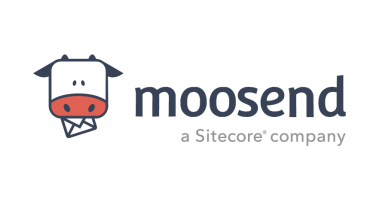
Some say that the great resignation – a wave of job changing during and post-pandemic – arose because employees have rethought what matters in life. Latent frustrations have come to the surface and there’s a realisation that life’s too short for half-heartedness.
This, it has been suggested, has extended to the agency-client relationship, where commentators believe there is dissatisfaction and disillusionment among agency staff. Why? Because agencies are no longer at the top table. They have been relegated to factotums when to be truly effective, they should be the business’s strategic partner (not even just the CMOs), helping define the company direction from their unique understanding of which levers to pull, the channels to pull them on and, of course, the customer.
“People conflate marketing with communications. Most agencies never ask the client, ‘Why are we doing this?’” says Claire Humphris, CEO of Iris London.
Understanding what marketing, and therefore the agencies, bring to the table remains hit and miss. It helps to have a CMO who champions the cause and can show the business the agency’s worth, and then a CEO who leads the organisation to espouse it. This isn’t easy. Recent research suggests that while 86% of CEOs said CMOs had the power and credibility to influence their decisions, only 34% said they had confidence in their CMOs. A further 38% said their CMOs had the wrong skill set for the changing marketing environment.
But CMOs cannot be both jacks of all trades and experts in all of them. Which means the drive to true customer-centricity depends on more agency involvement, not less. Customer-centricity is one of three key trends that defines today’s market, along with digital transformation, including how that reshapes customer interactions, and the service-driven economy.
Laurence Parkes is CEO of Rufus Leonard. He explains why now is the time for marketing and its agencies to break free of their shackles: “Services, digital and the rise of the customer-centric mindset have enabled marketing as a fully rounded concept: understanding the customer and creating value for them through created experiences. This is the only true definition of marketing and is what has allowed good CMOs and their agencies to expand their remit.”
Even physical product-driven industries, such as manufacturing and electronic, have moved towards also offering services to add value and differentiation in a crowded market. To leverage all these disciplines, CMOs need partners. Andrew Dimitriou, EMEA CEO of VMLY&R, insists: “A good agency is involved in all aspects of a client’s business, sitting on product innovation boards. There, day in, day out.”
It’s particularly important today because, as Humphris adds, customer problems sit outside siloes, and so the agency needs to sit outside them too. It can be culturally difficult for client organisations to accept. It is the task of leadership to open doors to the agencies and encourage people to work together to resolve challenges. But support must be firm. “The senior stakeholder has to lay that down from the outset,” Humphris warns.
Some client organisations already see the value of an agency in taking a holistic view of their business. The trend towards agile, responsive marketing means businesses must react fast to changing customer expectations – never more so than in the pandemic.
Even today, post-pandemic, the landscape is changing fast. Clients don’t have the capacity in-house to engage with all the latest trends – the metaverse, for example – to evaluate their worth and plot how to integrate them. But without doing so, they risk being left behind. “Our job is to understand that world [the metaverse], what the latest is from a consumer point of view and bring it into the business, and how it creates value,” Dimitriou explains.
Agencies could drive innovation and experimentation without extensive retooling by an established business. Could the idea that agencies are simply the ‘creative’ arm be stopping organisations from embracing them? If so, they’re missing out. “Creativity is about finding solutions that help a business interact with its potential customer in a way that is easier, smoother and differentiated. If more people thought of themselves as creative, it would be liberating,” Humphris admits.
Even then, with the huge variety of skills and disciplines involved in building a customer-centric business, it’s unlikely any single agency can become a one-stop-shop for a client. This is where excellent networking capabilities come to the fore.
Parkes says: “It’s hard to have breadth of capability in an agency of 65 people. It’s a challenge for agencies to manage that breadth. We take the ecosystem approach – it’s an excellent solution to the problem.”
Of course, when agencies and internal departments all start to break out of their siloes, there is enormous potential for chaos to ensue. Keeping agencies in boxes and restricting their influence to direct reports was an easier – if limiting – relationship to manage. Working with agencies across the entire organisation presents new challenges for the business: whose responsibility is this alliance?
“Certain clients are already there with marketing operations,” Dimitriou reveals. Marketing operations, or MOps, while seemingly still siloed in the marketing department, are a solution to help functions – technical, intellectual and more – engage across the organisation in a coordinated and effective manner. Marketing software company Hubspot has a neat analogy to define MOps. In the School of Rock film, in which a motley group of pupils and a renegade teacher form a band, actor Jack Black approaches the class president and says: “Summer, you’re in charge of the whole thing.”
It isn’t simply that agencies deserve a seat at the top table, although they surely do. It’s about realising that, if an organisation is committed to breaking down its internal siloes to become truly customer-centric, it needs to break down its external ones too, and open itself to the potential that agencies have to offer – at every level.

Some say that the great resignation – a wave of job changing during and post-pandemic – arose because employees have rethought what matters in life. Latent frustrations have come to the surface and there’s a realisation that life’s too short for half-heartedness.
This, it has been suggested, has extended to the agency-client relationship, where commentators believe there is dissatisfaction and disillusionment among agency staff. Why? Because agencies are no longer at the top table. They have been relegated to factotums when to be truly effective, they should be the business’s strategic partner (not even just the CMOs), helping define the company direction from their unique understanding of which levers to pull, the channels to pull them on and, of course, the customer.
“People conflate marketing with communications. Most agencies never ask the client, ‘Why are we doing this?’” says Claire Humphris, CEO of Iris London.





